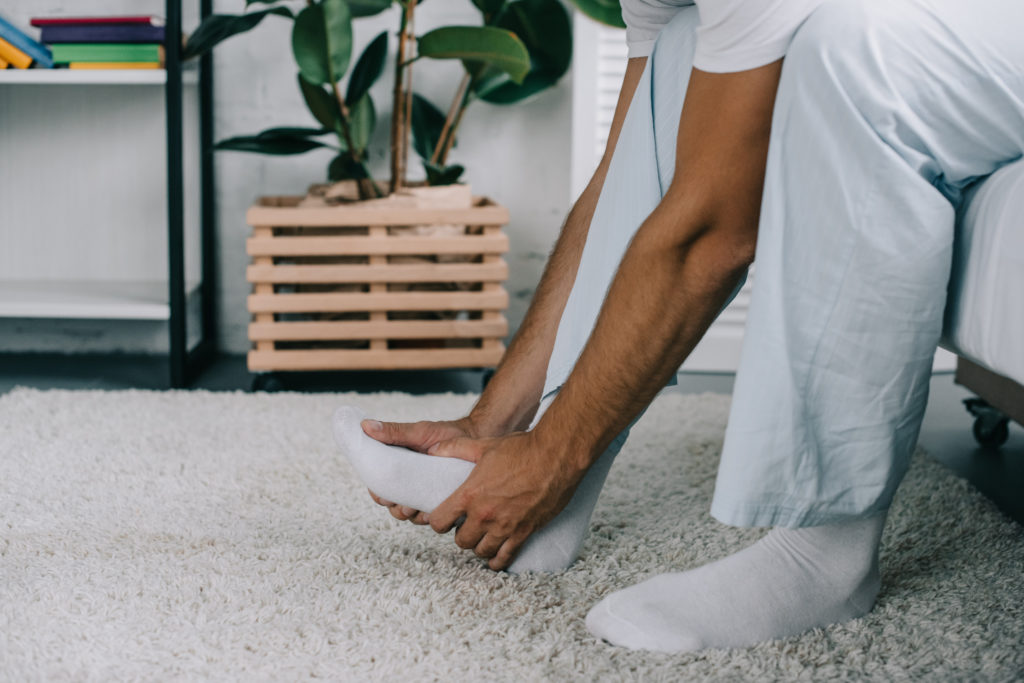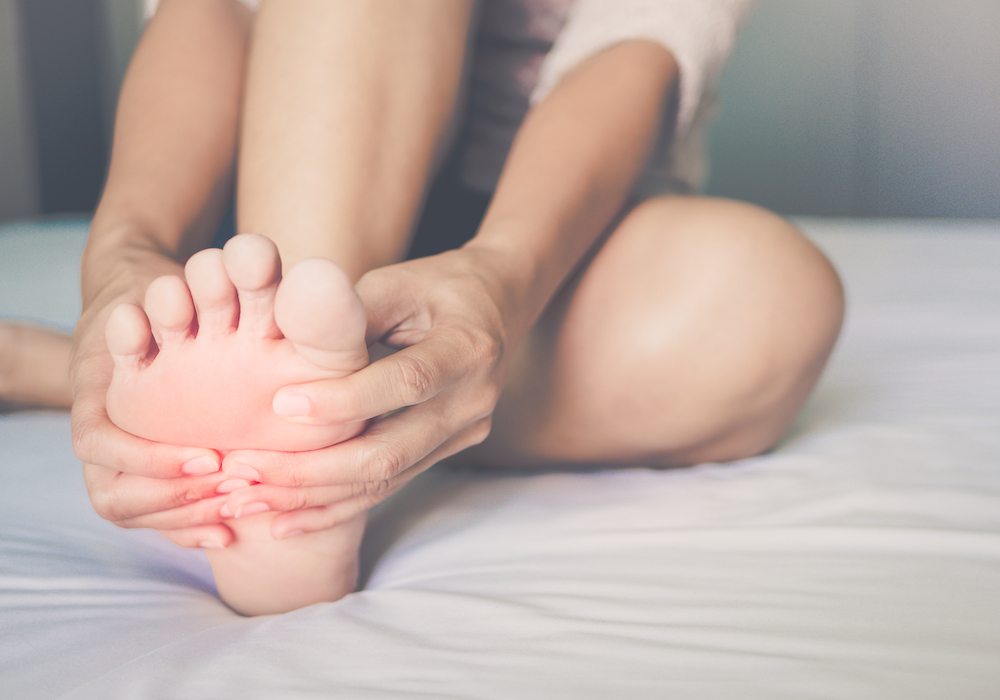THIS POST IS PART OF THE ULTIMATE GUIDE TO FOOT AND ANKLE INJURIES
The joint at the base of the big toe is known as the metatarsophalangeal (MTP) joint. At the ends of this joint, there is articular cartilage. Injury to this cartilage or degenerative change over time can cause just the bones to rub together, which can result in a growth on top of the bone, known as a bone spur.
A bone spur can cause the MTP joint to become stiff, which prevents the toe from bending while you are walking. The MTP joint bends with every step, so stiffness makes walking painful and challenging. This condition is known as hallux rigidus, Latin for stiff big toe. It is essentially arthritis of the big toe joint.
What causes a stiff big toe?
A stiff big toe is thought to be caused by injury to the cartilage, such as stubbing your toe, or disparity in bone anatomy, which results in more stress on the MTP joint. It can also be caused by wear and tear accumulated over time, causing cartilage damage, leading to arthritis of this joint. It can occur at any age but is much more common as we age.
Symptoms of a stiff big toe
- Joint pain while walking or during activity.
- Swelling
- Difficulty bending the toe.
- Pain with walking and bearing weight.
- A bump forms on top of the big toe, which indicates a bone spur.
How do you treat a stiff big toe?
It is easier to treat a stiff big toe before a bone spur forms. It is best to see a doctor immediately if you can’t bend your toe or if you aren’t putting weight on your big toe while walking due to pain.
A doctor will first perform a physical exam and often will order X-rays. This will help determine how much motion remains in the joint as well as how arthritic the joint has become. The joint space and cartilage can also be examined on X-rays along with the presence or absence of bone spurs.
Treatment options can include non-operative options and surgical interventions depending on the severity of the condition.
There are three primary surgical procedures for a stiff big toe.
- Cheilectomy. This surgery is for more mild degenerative change and bone spurs. The spurs are removed surgically to allow the toe to bend again. The joint is cleaned out and loose flaps of cartilage are removed as well. Sometimes part of the bone is removed to allow improved motion. The foot is usually swollen for several months, but typically results in relief in the long run.
- Arthrodesis. This procedure is only for severe cases. After surgery, the toe will no longer bend. The bones of the big toe joint are fused together. Damaged cartilage is removed, and the joint is put into a set position to allow the bones to grow together. Surgery is followed by a boot immobilization and protected weightbearing for several weeks. The end result is still a stiff toe, but now without pain.
- Arthroplasty. This joint replacement surgery is for older and lower demand patients. The goal is to improve pain while keeping motion. This tends to have more unreliable results than cheilectomy or fusion surgery, so it is less common and is performed only in specific instances.
There are also nonsurgical ways to manage symptoms. However, they aren’t enough to stop the condition from advancing and typically do not reverse the damage.
- Footwear. Nonsurgical treatment primarily consists of footwear modification. This includes shoes with a larger toe box to reduce pressure, no high heels or specially designed shoes. These shoes may include rocker shoes or stiffer shoes.
- Contrast baths. Alternate feet between a bucket of hot water and a bucket of cold water to reduce inflammation.
- Anti-inflammatory pain relievers. Pain relievers, like ibuprofen, can be used to ease symptoms like inflammation, swelling and pain.
- Injections. Occasional steroid injections into the big toe joint can be used to temporarily reduce symptoms but do not change the ultimate course of treatment.
- Carbon fiber inserts. Specially designed inserts can be placed under the liner of the shoe to stiffen the shoe and decrease motion at the big toe joint.
Schedule an appointment
Your well-being is important to us. Click the button below or call us to schedule an appointment with one of our orthopedic specialists. If your injury or condition is recent, you can walk right into one of our OrthoIndy Urgent Care locations for immediate care. For rehabilitation and physical therapy, no referral is needed to see one of our physical therapists.






